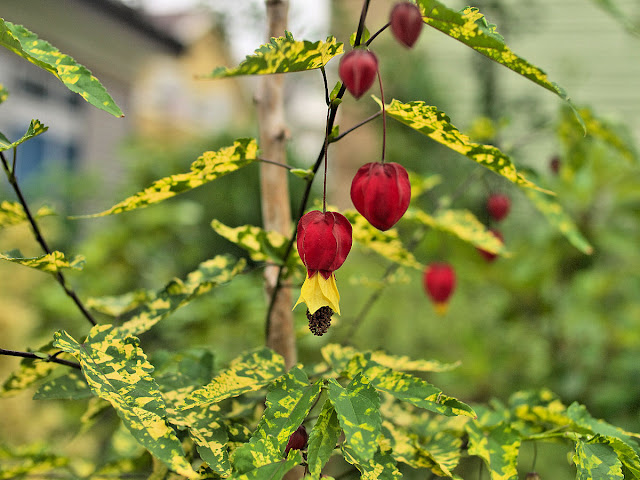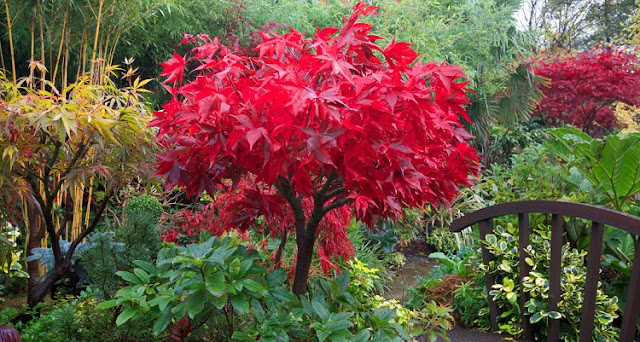 |
| Abutilon megapotamicum 'Variegatum' |
Despite its subtropical origins Abutilon megapotamicum 'Variegatum' is surprisingly resilient in the United Kingdom. It has proven hardy in the coastal and relatively mild parts of the country, except when severe winters are experienced. New growth is also at risk from late frosts, although it will grow through this damage once spring in full swing. It can survive temperatures down to -5°C (23°F), so when growing further north, cold protection will need to be in place. Alternatively, consider growing Abelia megapotamicum 'Variegatum' as a conservatory or greenhouse specimen.
It is an evergreen to semi-evergreen shrub, although generally deciduous in northern European climates. Given favorable condition you can expect Abutilon megapotamicum 'Variegatum' to grow to around 1.5-2 metres (4-6 ft) in height (which would translate as spread if grown unsupported). The lance-shaped to ovate leaves are shallowly lobed and heart-shaped at the base and will grow to 12 cm (5 in) long once mature. The pendent, bell-shaped blooms are orange-yellow with a red base, with five petals and are approximately 4 cm (1.6 in) long.
When grown outside it will require a sunny position, although it will also tolerate semi and dappled shade. Provide a sheltered position, fertile, well-drained soil. Avoid soils prone to water-logging. The further north you go you will need the protection of a south facing wall. To achieve the best effect, grow Abutilon megapotamicum 'Variegatum' as a wall shrub. This will also make it simpler to provide horticultural fleece for overwintering.
Pot grown specimens will do well in a good quality loam-based compost such as John Innes 'No 2'
Abutilon megapotamicum 'Variegatum' received the Award of Merit in 1988 and the Award of Garden Merit in 2012 from the Royal Horticultural Society.
For related articles click onto the following links:












